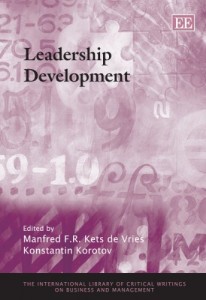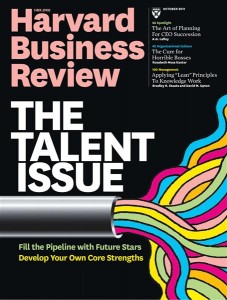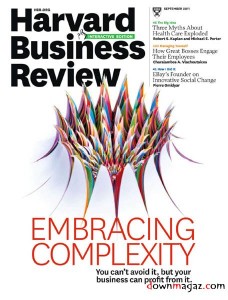 Steven Denning. The Leader’s Guide to Storytelling: Mastering the Art and Discipline of Business Narrative, Revised and Updated. San Francisco: Jossey-Bass, 2011.
Steven Denning. The Leader’s Guide to Storytelling: Mastering the Art and Discipline of Business Narrative, Revised and Updated. San Francisco: Jossey-Bass, 2011.
I consider the book to be a classic and welcome Denning’s update.
Essentially he is offering guidance in oral communication. His suggestions mainly apply to using stories or business narrative in performing in a leader role effectively. He covers topics like making sure the story you tell fits the current context. He identifies foru key elements in storytelling performance:
- A style that is “plain, simple, and direct.”
- Telling the truth as you see it,
- Prepare, prepare, prepare and be spontaneous,
- Present in an authentic way that fits with your style.
Much of the book is about how to do these things. It is followed by a discussion of how to use storytelling in organizational change. He ties it all up in a neat package about being a different kind of leader – an interactive leader. “It’s an interactive mode of leadership that swims in the richness and complexity of living and thrives on the connections between things… someone who embodies the interactive mode of thinking, speaking, and acting and takes on new capabilities that narrative enables can accomplish what was inaccessible to someone operating solely in the traditional command and control mode.
There is not much that is added to the discussion of leadership one can find in the popular leadership literature. And the book does provide useful information about enlivening our communication in a business environment.
 Mitchell B. Rothstein and Ronald J. Burke, Eds. Self-Management and Leadership Development. Northampton, MA, USA: 2010.
Mitchell B. Rothstein and Ronald J. Burke, Eds. Self-Management and Leadership Development. Northampton, MA, USA: 2010.
This edited volume by two Canada-based scholars offers a range of materials by others of self-awareness, self-management and how the two relate to unique challenges. First of all, I prefer the term “leader development” to talk about individuals developing to prepare for leader roles and “leadership development” to refer to leader development plus development of culture and systems in organizations. The editors do not make this distinction, but we cannot blame them, since there are only a handful of academic and practitioner authors I can identify who do. In the remainder of this brief exploration of a 500-page book, however, I will maintain the distinction I prefer.
The editor’s opening chapter is entitled “Self-assessment and leadership development: an overview.” They ground this work in Friedman’s Be a Better Leader, Have a Better Life and that developing self in order to lead applies to all aspects of one’s life, if one is to achieve satisfaction and achieve while being held as significant by others. Self-assessment includes introspection and integration of both internal and external feedback into a growing awareness or consciousness about self. They address self-management for the average person. This is a huge topic that they do not pretend to cover in this volume. However, all of these topics are treated to some degree by the contributing authors.
The chapter authors range from university professors to consultants to individuals in government and business organizations. There are a few familiar names, e.g. Richard E. Boyatzis at Case Western, who has worked so closely with Daniel Goleman and Annie McKee on emotional intelligence and leadership; Ron Riggio, executive director of the Kravis Leadership Institute at the Claremont McKenna College, and author of several books on leadership; and Stephen J. Zaccaro of George Mason University who is known for his work on executive leadership.
I will share a bit from one of the last chapters in the book, “Preparing next generation business leaders,” by Philip Mirvis from the Center for Corporate Citizenship, Kevin Thompson at IBM and Chris Marquis from the Harvard Business School. Seems like an impressive team to me! They are concerned with the implications of changes in work environments for the competencies in the next generation of business leaders. These changes include increased numbers and diversity of stakeholder, increased complexity and the like.
Such changes have led to decreases in hierarchy and more lateral and organic interactive processes. This requires “shape shifting” at work. To guide this they suggest an interesting set of questions:
- What happened to my office?
- Who is on my team?
- Who do I work for?
- What am I supposed to do?
- What do I do with all this information?
- To whom am I responsible?
What a great set of questions for guiding an ongoing process of role redefinition! Here is the set of meta-skills that individuals will need for executive and leader roles (note that I distinguish they two but they do not):
- Self-Leadership
- Leading Others
- Leading Systems
- Leading the Enterprise
Of course, they define these. For example, self-leadership includes self-awareness, reflection, Tolerance for ambiguity, adaptability and emotional resilience. These terms, it seems to me, are the lexicon of the current programs designed to prepare people for leading.
 Manfred F.R. Kets de Vries and Konstantin Korotov, Eds. Leadership Development. Northampton MA, USA: Edward Elgar, 2011.
Manfred F.R. Kets de Vries and Konstantin Korotov, Eds. Leadership Development. Northampton MA, USA: Edward Elgar, 2011.
Some of my introductory comments to the above “booknote,” particularly in terms of terminology, apply here. I will note that Kets de Vries is probably one of the most respected scholars and consultants in the field of leadership based in Europe. Korotov is at the European School of Management and Technology in Germany and I do now know his work. This time we have a 600 plus page book with 36 contributions by authors from many parts of the world. Many of these materials have been collected from earlier journal publications, so essentially what we have here is a reader, a text for university courses on leadership.
Authors range from Fred Fiedler to Bruce Avolio to Richard Boyatzis, David V. Day and the editors, themselves. There are a number of fascinating articles, depending on your interests, including the editors focus on designing executive development programs. Part V. is entitled “Leadership Development: Beyond Individual Leaders,” which I take as a bow to the distinctions I have discussed above; this is not surprising since one of the contributors is Day who has advocated similar distinctions in his co-authored work, Integrative Leader Development. However, unless you are interested in academic research on the subject of leadership and leader development, you will probably want to pass this one up. But if you like to explore, this is a very convenient compendium covering many interesting topics.
 A.G. Lafley, “The Art and Science of Finding the Right CEO,” with a Foreword by Noel Tichy, Harvard Business Review, 89.10, October 2011, pp. 66-74.
A.G. Lafley, “The Art and Science of Finding the Right CEO,” with a Foreword by Noel Tichy, Harvard Business Review, 89.10, October 2011, pp. 66-74.
Issues of leader development and succession have been subjects of both confusion and considerable investment in organizations, particularly large corporations, for some time. If you want to know how the big boys do it in Proctor and Gamble (P&G) here is the place to look.
Tichy points to what can go wrong in the abrupt resignation of Hewlitt-Packard’s CEO Mark Hurd (Carly Florina’s successor) under a cloud of accusations. The Board had not only not done its homework in the selection of Hurd, but they and the company were not at all prepaed for a successor to step into the CEO role. Confusion and uncertainty, as in the H-P case, suggests Tichy, is the norm in many large companies. Part of the problem is the lack of Board involvement early enough in the succession process.
Lafley lays out a consulting/coaching and development process he put in place as CEO of P&G in 2000. He and his leadership team were “committed to strengthening P&G’s leadership and management from the top to bottom.” (Isn’t the language of hierarchy fascinating?) This was one of the top responsibilities of the Board. One of their goals was to have a cadre of potential CEOs candidates continuously on tap.
Part of this article focuses on Board responsibility. Part of it focuses on the process that was used and the roles of the current formal leaders. He began by redefining his role, including taking on the responsibility for developing as many potential CEOs as he could.
What I find fascinating – and it makes it worth the read – is Lafley’s description of an extraordinary process for achieving the goal. He is clear that it is a “continuous and evolving process” – a refreshing frame from someone in so powerful a position and thus holds hope for us all, yet.
For flavor here is his list of things he learned about CEO succession (in brief).
• It’s a horse race – more is better and it doesn’t have to be a public process;
• It’s not personal; it is for the institution, the business.
• It’s hard to let go, pass the reins to the successor.
• The process will never be perfect [so we can keep learning].
• Move over, move out, move on.
• CEO succession forces the board to up its game.
 Nathaniel Foote, Russell Eisenstat and Tobias Fredberg, “The Higher ambition Leader,” Harvard Business Review, 89, 9, September 2011, pp.94-102.
Nathaniel Foote, Russell Eisenstat and Tobias Fredberg, “The Higher ambition Leader,” Harvard Business Review, 89, 9, September 2011, pp.94-102.
The authors are leaders in Truepoint, a consulting and research firm that includes Michael Beer, a well known business writer based at Harvard, and Jay Galbraith, another well known business author who was at MIT and the Wharton School at the University of Pennsylvania. The firm looks to be virtual with associates of one sort or another in the US and Sweden (probably other bases, as well).
The authors use the consistent performance of Standard Chartered Bank in the face of the financial crises facing the world as a case study. They give considerable credit for this performance to the CEO, Peter Sands. They go further,
“Sands is one of a group of CEOs who have been evolving a superior approach to running their companies. We call them ‘higher-ambition leaders’ [HALs] because, unlike many executives, they are not content with achieving only strong economic returns. Rather, they strive to generate high performance on three fronts at once: creating long-term economic, value, producing significant benefits for the wider community, and building robust social capital within their organizations.” (95-96)
Well, this is almost the triple bottom line – and maybe they interpret it that way – of People, Planet and Profits (notice what I put at the last position on the list – that essential ingredient to business sustainability). And one of the things I like about this article is that the authors indicate that the CEOs [HALs] they have interviewed tend not to rely on heroics, but it takes know how. Three points
- They forge a more powerful strategic vision by drawing on an expansive view of their companies’ heritage and cultural, organizational, and social assets.
- They build the widespread commitment and capabilities to achieve that vision by developing the organization into a community of shared purpose, marked by high levels of emotional connection, trust, and respect.
- They have the strength of character to commit themselves and their organizations to that vision over the long run.
Among the themes they develop in the article are what they call a “common leadership pattern.” Or, Leading with Guts! HALs do the following:
- Maintain a constant focus and stay the course over many years,
- Downplay their status and admit mistakes, and
- Directly engage with people at many levels, through a range of media.
The article seems to me to be a generally tuned up presentation of the kinds of principles one finds in the work of Covey, Collins, Kouzes and Posner and others. Very often these authors fall prey to setting up a model, but provide little to suggest how folks develop and sustain these practices, much less how variable conditions make lists such as these little more than suggestive.
